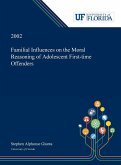Over the past several decades the seeming escalation of crimes involving sexually deviant, coercive, and aggressive behavior has become an increasingly serious problem, manifested in costs to both victims and society at large. The long-term psychological impact of sexual assault on adult and child victims has been documented numerous times. The costs incurred by society include a network of medical and psychological services provided to aid victim recovery, the investigation, trial, and incarceration of offenders-often in segregated units or special facilities-and the invisible but tangible blanket of fear that forces potential victims to schedule normal daily activities around issues of safety. Despite the gravity of the problem, there has been a paucity of empirical research directed at the etiology, course, remediation, and management of sexually deviant and coercive behavior. In treating these disorders and in making crucial decisions about how to manage these offenders, clinicians have been forced to rely on their personal experience. Such experience by its nature is unsystematic and lacks the validation that empirical research provides. The lack of sound empirical data addressing the problem is certainly noteworthy, though not surprising. The paucity of research in this area may well be attributable to historical scientific timidity about most aspects of sexual behavior. In 1922 Dr. Robert L.
`...an important contribution to the field... The book is well written and full of gems that will be helpful to both students and experienced practitioners in forensic social work and foresic psychology or psychiatry as well as to personnel in the criminal justice system, from police sexual assault investigators to members of the judiciary.'
Psychiatric Services, 52:9 (September 2001)
`For those seeking to understand the complexities involved in responding to sexual violence (especially by adults), Prentky and Burgess's thoughtful analyses and impressive command of the empirical literature provide a much needed resource. Their interdiscioplinary approach has the advantage not only of reaching a wide audience but, more importantly, of reinforcing the need to take seriously the contributions of different research fields and the importance of a more multisystemic response to violence. I can only hope that this text will serve as a model for future efforts.'
READINGS, 16:1 (March 2001)
Psychiatric Services, 52:9 (September 2001)
`For those seeking to understand the complexities involved in responding to sexual violence (especially by adults), Prentky and Burgess's thoughtful analyses and impressive command of the empirical literature provide a much needed resource. Their interdiscioplinary approach has the advantage not only of reaching a wide audience but, more importantly, of reinforcing the need to take seriously the contributions of different research fields and the importance of a more multisystemic response to violence. I can only hope that this text will serve as a model for future efforts.'
READINGS, 16:1 (March 2001)
`...an important contribution to the field... The book is well written and full of gems that will be helpful to both students and experienced practitioners in forensic social work and foresic psychology or psychiatry as well as to personnel in the criminal justice system, from police sexual assault investigators to members of the judiciary.' Psychiatric Services, 52:9 (September 2001) `For those seeking to understand the complexities involved in responding to sexual violence (especially by adults), Prentky and Burgess's thoughtful analyses and impressive command of the empirical literature provide a much needed resource. Their interdiscioplinary approach has the advantage not only of reaching a wide audience but, more importantly, of reinforcing the need to take seriously the contributions of different research fields and the importance of a more multisystemic response to violence. I can only hope that this text will serve as a model for future efforts.' READINGS, 16:1 (March 2001)








